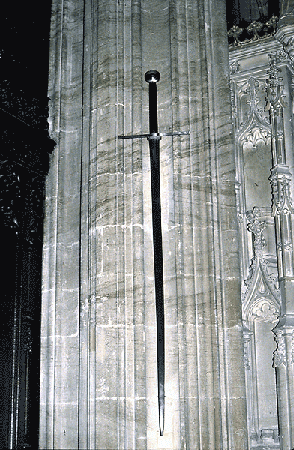Posts: 301 Location: Brisbane, Australia
Thu 16 Nov, 2006 10:26 pm
Edward III Bearing Sword
Thanks Richard , Edward, Chad...........Its suprising (or mabye not ! ) that so little has been documented about this Historic Sword ! I guess that when people live in countries that are dripping in History all around them, they sort of take it all for granted......thanks for the input....every bit helps. You see, I just got the Hanwei version of the
Edward III war sword, and I must say that laying it next to the photos of the original, it looks identical even down to the adder-skin grip ! Its very sharp and pointy !! Now, my good friend is a dealer here for these and other merchandise....
http://www.themedievalemporium.com/ .......( if fact, if I may humbly give myself a quick plug, if you go to the
" Furiture and Wooodcraft " page,.... that's all my stuff ) ...but Im back to doing Arms and Armour right now. Anyhow, he's a big fan of Edward and son and asked if I had any reference for the bearing sword. I'd certinally like to get some good photos or a drawing from somewhere for my own files.
Cheers !

